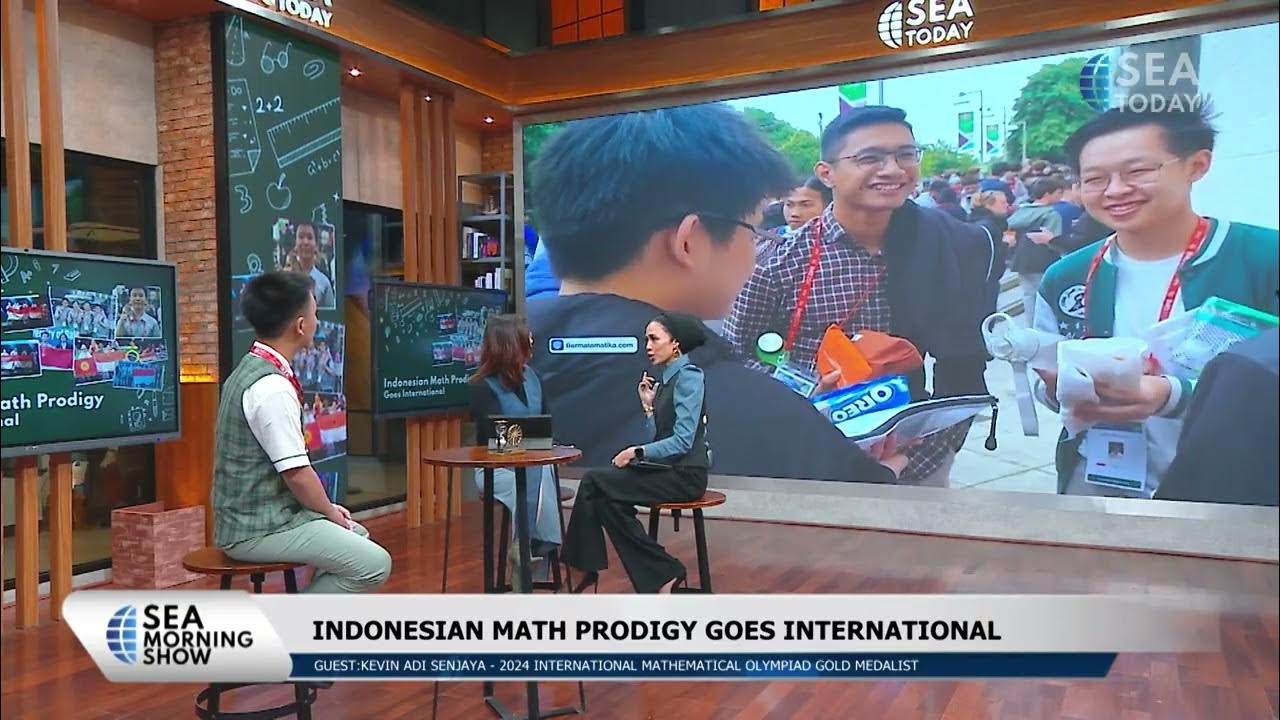Secrets from International Math Olympiad Winner (Exclusive Interview)
Summary
TLDRIn this interview, Rishab Jain, a former USA IMO team member and MIT undergraduate, shares his journey in mathematics, including his achievements in competitions like MathCounts and the International Math Olympiad. He offers advice for aspiring math competitors, discussing his preparation strategies and the importance of a solid foundation. Jain also delves into his current research in machine learning at MIT, focusing on robot trajectory planning with diffusion models. The conversation touches on potential career paths, including academia, robotics, finance, and software engineering, highlighting the diverse opportunities for math enthusiasts.
Takeaways
- 🏆 ROM Goyal is a highly accomplished math student who has won numerous competitions, including a bronze medal at the International Math Olympiad.
- 📚 ROM is currently a freshman at MIT studying math and computer science, taking courses like abstract algebra and advanced algorithms.
- 🕒 He manages a rigorous academic schedule, often studying until late at night and balancing work with leisure.
- 🤝 ROM and the interviewer have known each other for over a decade, starting their friendship in early childhood.
- 🧠 His interest in math began at a young age, and he found competitions like MathCounts and AMC to be a great way to maintain his interest and set goals.
- 📈 ROM's peak study period for the IMO involved spending 5-8 hours a day honing his skills and working through problems.
- 📚 For beginners in math competitions, ROM recommends starting with structured programs like MathCounts and using resources like 'The Art of Problem Solving' books.
- 🏞️ The Math Olympiad Program (MOP) is a summer program for top performers on the USAMO, providing an intensive training experience at Carnegie Mellon University.
- 🤔 ROM's approach to solving Olympiad problems involves starting with small examples and building an understanding over time, emphasizing patience and exploration.
- 🔗 The transition from AMIE to USAMO is considered the most challenging step in math competitions, requiring a shift to proof-based problems.
- 💡 ROM's current research at MIT involves using diffusion models in machine learning to plan robot trajectories, reflecting his interest in both computer science and math.
Q & A
What was ROM Goyal's achievement at the MathCounts National Competition?
-ROM Goyal was a top 12 winner at the MathCounts National Competition in middle school.
What was ROM's score on the USA Math Talent Search?
-ROM Goyal scored a perfect score on the USA Math Talent Search.
How did ROM perform at the USA Math Olympiad test?
-ROM Goyal placed second in the U.S. on the USA Math Olympiad test.
What award did ROM win at the International Math Olympiad in Norway?
-ROM Goyal won a bronze medal at the International Math Olympiad in Norway.
What is ROM's current educational status?
-ROM is currently an undergraduate freshman at MIT studying math and computer science.
What courses is ROM taking at MIT?
-ROM took abstract algebra last semester and is currently taking an advanced algorithms course at MIT.
How does ROM balance his sleep schedule given his academic rigor?
-ROM usually sleeps around three in the morning, balancing work and some leisure time.
How did ROM and the interviewer know each other?
-ROM and the interviewer have known each other since they were around five years old, meeting through their parents.
What motivated ROM to participate in math competitions?
-ROM was always interested in math, and competitions were a way to keep his interest alive and provided goals to work towards.
What math competitions did ROM participate in?
-ROM participated in the AMC and AIME tracks, ultimately reaching the USA IMO team level and competing at the International Math Olympiad.
How many hours a day did ROM spend studying math during his peak season?
-During his peak season, ROM spent anywhere from five to eight hours a day studying math.
What is ROM's advice for those starting in competition math?
-ROM suggests starting with structured programs like MathCounts in middle school and working through books like the Art of Problem Solving series to build a strong foundation.
What is the Math Olympiad Program (MOP) and how is it structured?
-MOP is a training camp for the IMO held at Carnegie Mellon University, where 60 high school students are invited based on their USAMO performance to train and prepare for the IMO.
What is ROM's general thought process when solving Olympiad problems?
-ROM starts by doing small examples, drawing diagrams for geometry, or trying out small cases for non-geometry problems, then explores promising avenues to build an understanding over time.
What is ROM's current research focus at MIT?
-ROM is currently focused on machine learning, specifically using diffusion models to plan robot trajectories and navigate tough surfaces.
What career paths is ROM considering?
-ROM is considering academia, working at a robotics or machine learning company, finance, or software engineering, given his interests in math and computer science.
Outlines

This section is available to paid users only. Please upgrade to access this part.
Upgrade NowMindmap

This section is available to paid users only. Please upgrade to access this part.
Upgrade NowKeywords

This section is available to paid users only. Please upgrade to access this part.
Upgrade NowHighlights

This section is available to paid users only. Please upgrade to access this part.
Upgrade NowTranscripts

This section is available to paid users only. Please upgrade to access this part.
Upgrade NowBrowse More Related Video

How to think like a genius ( from a 5x IMO medalist)

Revealing My Stats for Harvard, Stanford, MIT...

Talkshow: Indonesian Math Prodigy Goes International

BBM VLOG #264: Ang Galing ng Pinoy! Filipino Excellence in S.T.E.M | Bongbong Marcos

Car Garage Owner Gomti Yadav Earns Lakhs, Grows Business 60%

Prestasi Gemilang Anak Indonesia di Olimpiade Astronomi Internasional
5.0 / 5 (0 votes)